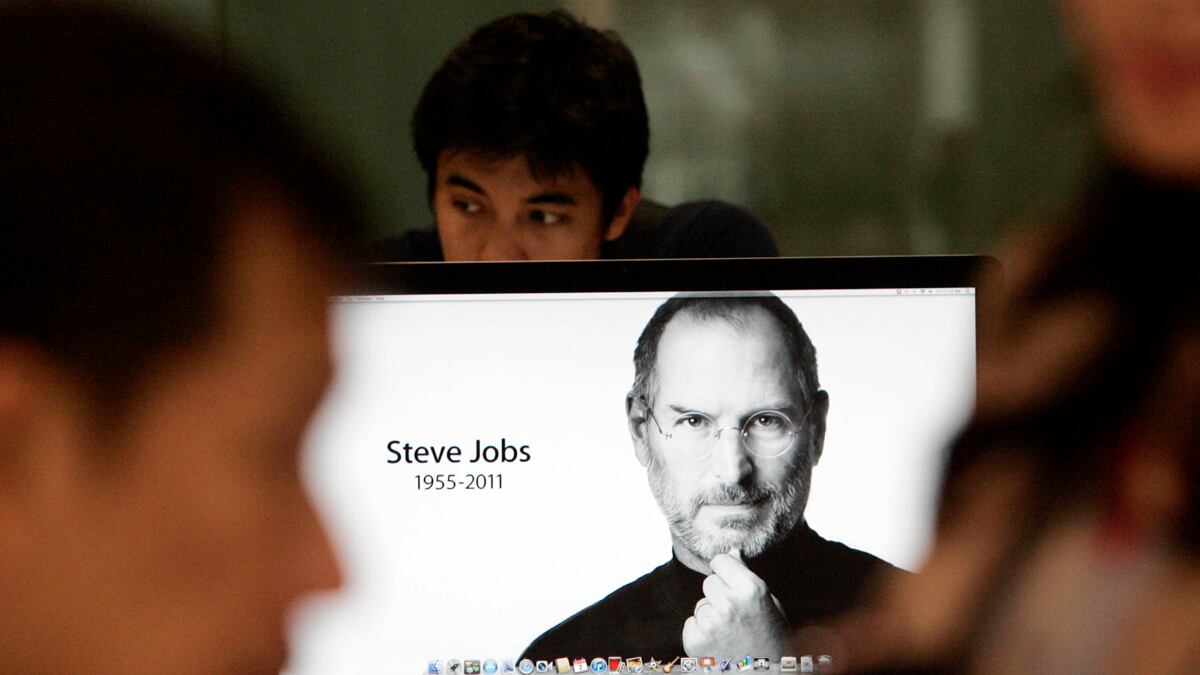Steve Jobs might have believed in some kind of afterlife—he was a Buddhist, after all. So if he’s out there somewhere, still watching, you have to imagine that he’s not in a particularly good mood today. Either that, or he’s just glad he got out right before the you-know-what hit the fan.
That’s a long way of saying that for the first time in five years, Apple just reported financial results that fell short of what Wall Street was expecting.
Wall Street expected revenues in the September quarter would be $29.4 billion. Apple reported $28.3 billion. That’s not a big miss, except that everyone has grown accustomed to having Apple blow way past whatever number Wall Street is expecting. So to miss by even a little is just unheard of for Apple. Earnings were a little short of expectations, too.
Is this what Apple is going to look like in the post-Steve era? We all knew things would not be as special without Jobs in charge. But the conventional wisdom was that it would be a year or two before Apple would experience any problems. Instead, here we are.
The official cause of the shortfall was weak sales of the iPhone, probably due to the fact that people were waiting for the new iPhone, the iPhone 4S, to come out in October. Apple sold 17 million iPhones in the September quarter, which was a drop from the previous quarter when Apple sold 20 million units. On a conference call with analysts, Apple’s CFO Peter Oppenheimer blamed the shortfall on “new-model speculation.”
Apple’s stock price dropped on the news. And certainly it’s not a good sign when a company like Apple starts missing its numbers.

But it’s important to keep things in perspective. For one thing, Apple just broke all kinds of sales records with the opening weekend of the iPhone 4S, moving 4 million units in just three days. And Apple’s guidance for the current quarter was very strong. It's projecting $37 billion in sales, which would be a big jump from $26.8 billion in last year’s holiday quarter.
For another, despite what Wall Street thinks, the results Apple announced on Tuesday were pretty damn good. The September quarter marks the end of Apple’s fiscal year. For the full year, its annual sales were $108 billion, up 65 percent from last year, when it did $65.2 billion in sales.
That kind of growth rate is unheard of for a company this size. It means that last year Apple grew by $45 billion. That’s about what Amazon does in a year. It’s one and a half times what Google does. Think about that. Apple grew by a Google-and-a-half.
The results also put Apple in some pretty elite company. The only other tech companies whose revenues exceed $100 billion are IBM and HP.
Apple is seeing strong growth across almost every part of its product portfolio. Mac sales are growing faster than the overall PC market. The iPhone remains the bestselling smartphone on the market. The iPad is so dominant in its space that nothing else in the space really matters. Sales of iPads grew 166 percent in the September quarter.
What makes this all the more amazing is that 15 years ago, in 1996, Apple stood on the brink of bankruptcy. Jobs, who died earlier this month at age 56 after a long battle with cancer, was the person who led Apple through the most amazing comeback in corporate history.
Oddly enough, it all started almost exactly 10 years ago to this day—on Oct. 23, 2001, when Apple introduced the first iPod. After that came the iTunes store in 2003, the iPhone in 2007, and the iPad in 2010.
Those last two products, the iPhone and iPad, today account for about 70 percent of Apple’s revenue. Quibble all you want about iPhone sales falling short by a little bit in one quarter—you’re still looking at a $70 billion business that did not even exist four years ago.
To build that business Apple had to embrace an entirely new business model, one that is radically different from the PC-industry business model that had been built up over three decades.
In the old model, your PC was made by one company, its operating system came from another. You bought applications in boxes from different makers in different stores. And you bought your “content” (movies, music) from someone else.
In the new model, one company does everything, and that company is Apple. Apple makes the microprocessor, the device, the operating system, and some of the key applications. It sells the other apps through its own App Store, and sells content through its iTunes Store.
According to the business-school textbooks, big companies like Apple that become invested in one way of doing things are supposed to be unable to change and embrace something new. According to the textbooks, the old guys are supposed to get trampled when technology changes. Yet Apple was able to pivot and embrace the new model. And it did this without killing its old business. Sales of Macintosh desktop and portable computers are still growing.
It is hard to imagine any organization that has ever inspired such excitement and devotion from its customers. Last weekend the Apple faithful once again were lining up on sidewalks to get a new gizmo. And even though the iPhone 4S hardly represents a breakthrough device, Apple sold 4 million of them in just three days, a new record.
Ten years ago today, when Steve Jobs was about to introduce the first iPod, Apple’s stock traded at $18 per share. Now those shares change hands for about $400.
Nobody expected the next 10 years to be so great. And nobody ever expected Apple to be the same without Steve Jobs. But nobody figured that problems would bubble up so soon, either.





